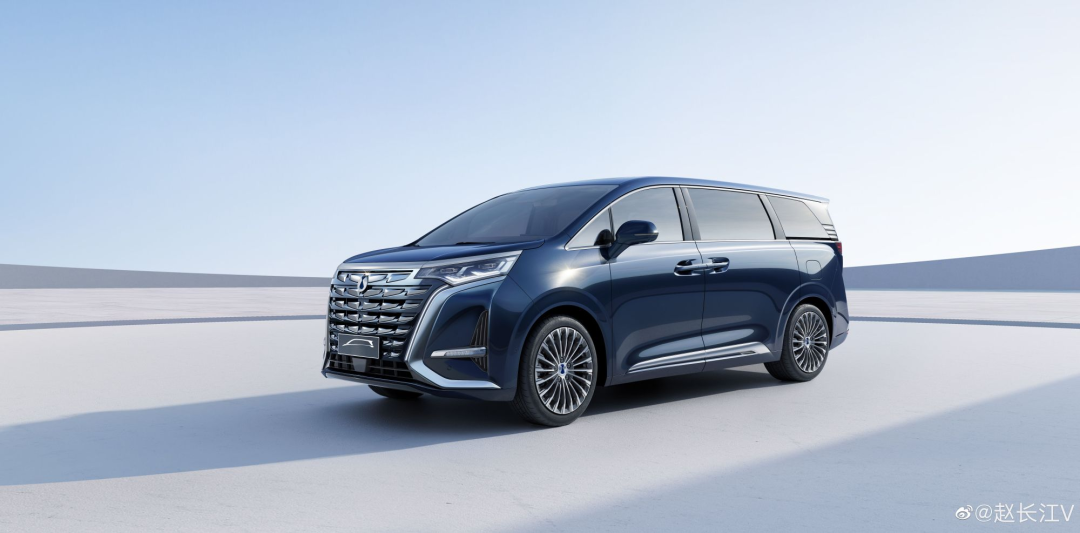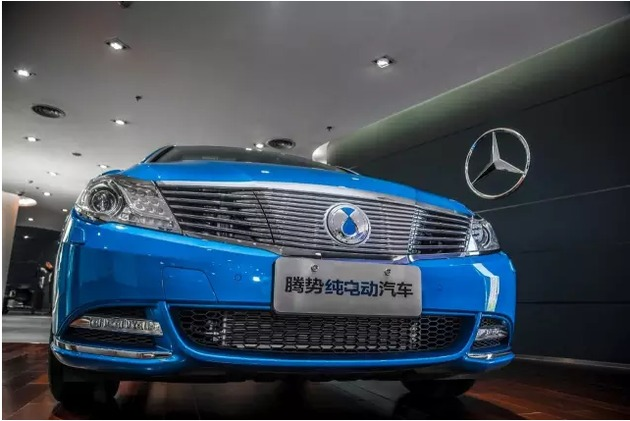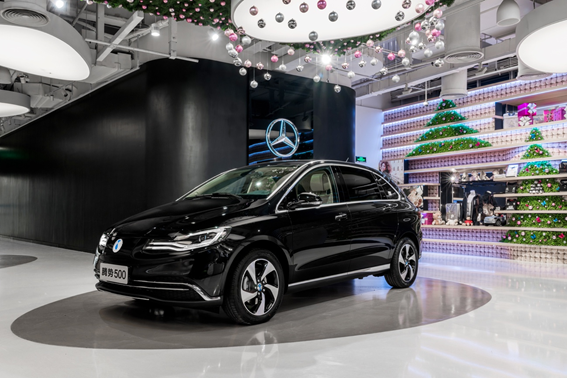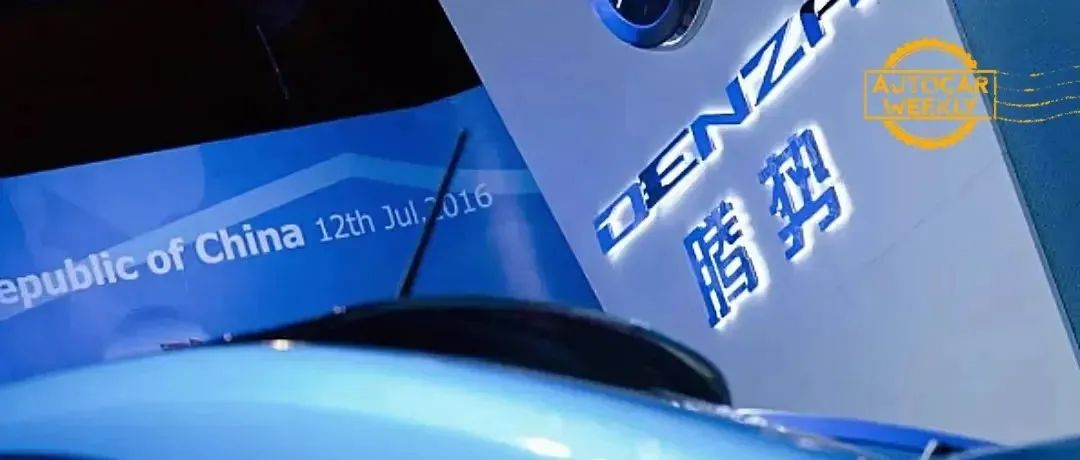Karakush
Text by Karakush
Wang Chuanfu’s most regrettable investment was in the brand DENZA.
From the launch of their first product in 2014 to last year, they sold a total of more than 20,000 cars, resulting in a cumulative loss of more than 5.22 billion yuan.
Although some companies might lose this amount in one year, no one has reached this hopeless level. The deep losses even led to a letter of inquiry from the Shenzhen Stock Exchange to BYD, asking about the risk of impairment.
DENZA’s other shareholder, Daimler, believes that it could not have been cut any further. At the end of last year, Daimler transferred a large amount of shares it held to BYD, changing their respective holdings from 50% to 10% for Daimler and 90% for BYD. The equity adjustment plan was completed in the first half of this year.
BYD believes that it can still turn the situation around. They have fully transformed DENZA, with the former general manager of BYD sales company, Zhao Changjiang, now serving as the general manager of DENZA’s sales division, as well as the spokesperson for the new product on Weibo, frequently engaging with key opinion leaders for half a year.
The first comeback vehicle is a high-end MPV powered by new energy. DENZA officially named it the DENZA D9 last week. If it were not for the pandemic, DENZA would have planned to showcase the new car at the Beijing Auto Show in April, no longer as a gilded car, but rather as an independent brand.

The only familiar element in DENZA’s new identity is the rumor that the price range of D9 may exceed 450,000 yuan. The tricky pricing marks DENZA’s third attempt to enter the same high-end river. Many people are wondering whether DENZA can make it, and how much longer Wang will keep on losing money.
Learn from Failure
For a brand that has been established for 12 years, the future lies in its past failures.
DENZA has been harshly criticized in all aspects, including its products, brand, marketing, and sales channels. Comprehensive failure is not easy to achieve, and it’s tough to guess right even in all the multiple choices. Therefore, the problem is more likely to lie in a strategic misstep.
First, there is a mismatch between positioning and demand. DENZA has two generations of products. The first is the DENZA 300 launched in 2014, followed by a mid-range improvement every two years with the launch of DENZA 400 in 2016 and DENZA 500 in 2018. The second generation of products is the DENZA X launched in 2019. Both generations are not successful.
DENZA has a misunderstanding. It is undeniable that they were one of the earliest practitioners to realize the policy’s opportunities and move quickly. They signed a joint venture in 2010, launched the brand in 2012, and launched the car in 2014, coinciding with a series of beneficial policies for new energy cars, including exemption from the purchase tax. The former CEO of DENZA, Lian Yubo, believed that “DENZA caught the best environment, and it was not the best time earlier or later.”However, what was really stimulated at that time was the market for small cars with terminal A00 level priced below 70,000 yuan, including a large number of low-end and affordable electric cars under the brands of JAC, Lifan, Zotye, Zhidou, and BAIC, which experienced rapid growth for three consecutive years and reached its peak in 2017, with a market share of over 53.3% in the new energy vehicle market.

TEsla is a hybrid created from the body of a Mercedes-Benz B-Class by Daimler and the three electric components by BYD. The official price is 369,000 yuan, and the price after subsidies is 255,000 yuan. Many criticisms that it is blindly more expensive than Mercedes-Benz are hasty. The official price was all just a joke at the time. The same is true for the 100-level electric car of Zotye, which was launched in the same year, with an official price of 158,900 yuan and a subsidized price of 48,900 yuan.
255,000 yuan is appropriate for a B-class joint venture car. Compared with the aforementioned iron bodies, the DENZA 300, with a 300 km range, was quite impressive in 2014 when the general range was 60-100 km. It won 25 awards in various automotive media selections the following year (which shows the company has invested heavily despite not highlighting its product’s hardcore features).
However, in the active period of this series from 2014 to 2018, the share of B-class electric vehicles did not exceed 1% of the new energy vehicle market. This sector took off in the years 2019-2020, during which time the share rose rapidly to 3.6% and 18.7%, respectively. Especially in 2020, thanks to the domestic production of Tesla, as well as the explosion of models such as Han from BYD and P7 from XPeng, the market expanded together, thus making room for electric cars priced over 200,000 yuan to survive. However, the DENZA series has been discontinued.
DENZA gave birth to this concept six years ahead of time. Its biggest mistake was to enter the mainstream market prematurely without considering the learning process for consumers, which led to it completely missing out on one product cycle.
Is it possible to stand firm without relying on the momentum and through one’s own efforts? Like Tesla and BMW i3, they were both introduced in 2014, expensive and rare, but they found a foothold: the former became a new toy for technology giants, and the latter became a commuting car for the upper class to give to their nannies. In comparison, DENZA lacks both product appeal and brand appeal.

This is the source of the second problem, the outdated concept of joint venture manufacturing.
DENZA is a delicate joint venture, an attempt by BYD to upscale and Mercedes-Benz to electrify, as old Wang said, “standing on the shoulders of giants”. In fact, BYD, which is endorsed by Mercedes-Benz and its century-old experience and standards, by converting fossil fuel to electric, did poorly as Mercedes’ substitute.On the product side, the advantage of car reviews is real range (which is actually a valuable quality)…It’s like being ugly, but really realistically ugly, there is no praise more hurtful than this. Mediocrity is not the problem, the lack of identity is. DENZA and other new energy brands, such as BMW and Brilliance’s joint venture, the Zhinuo, neither of them hang the Mercedes-Benz label, and it’s normal if you don’t remember.
To correct the insufficient Mercedes-Benz problem, it wasn’t until 2019 when DENZA X incorporated more Mercedes-Benz design into the BYD Tang EV600, even putting a “Mercedes-Benz design” nameplate on the car, and included it in Mercedes-Benz’s sales network. This “culmination” only increased DENZA’s annual sales from just over 2,000 to just over 4,000.
Reality is that joint ventures are no longer the golden signboard by then, let alone the cramped joint ventures, especially in the field of new energy, where it’s more persuasive and motivating to use self-developed high-end technologies rather than cramming in BBA (BMW, Benz, Audi). Without going into the details, BYD itself has matched what DENZA had in the past. Early on, DENZA failed to catch up with the “joint venture” brand advantage, and later, “joint venture” became DENZA’s negative asset for rapid adjustment.
Therefore, regardless of self-rescue or market acceptance, DENZA is making progress.
Is “Teng Erfar” the antidote?
Now let’s take a look at whether DENZA D9 can solve DENZA’s predicament.
MPVs are not traditional hot-selling segments, but coincidentally all major automakers are preparing to go full throttle this year. We’ve done a review of this in “There are always so many people who care more about whether you’re having a child than your mother.” According to DENZA’s forecast, this year is the explosion year for the mid-to-high-end MPV market, with mainstream family vehicle configurations being a large-space new energy MPV+SUV/sedan.
From the currently available information, as a family MPV (or at least business/home use), the advantages of D9 are:
1. Offers both pure electric and DM versions, with four-wheel drive and two-wheel drive options, so the price range will be wider. Technically, it’s arranged with the highest level of Di factory treatment, such as the pure electric version equipped with a wide-range heat pump, which can solve the problem of electric vehicle range reduction in winter. The hybrid version provides EV and DM modes, with a comprehensive range of over 1000km, to meet the needs of long-distance travel.
2. Large space, 5.2 meters long, with a wheelbase of over 3 meters. Seven-seat layout, “avoiding the embarrassment of one person not having a seat in the six-seat model.” Both the second and third rows have very long slide rails, which can manually achieve four-seater configuration.### 3. Design is Precise
A good example of meticulous design is the design of body side and sliding doors, which achieve coherence in five different surfaces with varying curvatures, completing several world-class engineering designs and craftsmanship.
4. Rich Standard Configuration
Including dual skylights with dual electric sunshades and one-touch switch; dual electric sliding doors; four doors with double-layer soundproof glass; and high-end brand tires.
To summarize in the words of Changjiang Zhao: “No one can remember second best in this world, so let’s be the best. Based on recent user feedback, preparation for various tasks, and product comparisons, I am confident that we can make DENZA’s high-end MPV the best.”
Although I, as an outsider, cannot infer where the “best” is from the above information, I can see ambition in the product, reflection in the strategy, and a more grounded response.
For example, pricing. The 450,000 yuan range is expected to be for pure electric four-wheel drive, while plug-in hybrids should be able to bring the “relatively wide price range” down to 350,000 or even 300,000 yuan, which would be quite attractive. With one hand holding high and the other earnestly raising money, understanding the underlying logic of independent high-end new brands is actually disruptive innovation far greater than brand premium. The correct approach is to use cost-effectiveness to penetrate competitors.
In addition to the D9, DENZA plans to release another mid-sized SUV and a mid-to-large SUV this year, with SUV information set to be released in May, and it is believed that the same strategy will be used. The product line for this year alone is already richer than the previous eight years.
In terms of brand marketing, DENZA is no longer sitting idly by. It fits in with the trend, re-establishes direct sales channels, develops apps, while promoting “user co-creation” and creating a high-end fan economy. The first step was the March fan naming campaign, with DENZA fans being given the exclusive name “Tengjiao”… not new, but it looks like a low-cost attempt at a contemporary wealth symbol.
DENZA has yet to launch a large-scale campaign. However, Changjiang Zhao said that DENZA’s brand influence is growing rapidly, with many enthusiastic car owners sending him a lot of consulting or suggestion messages, estimated to be tens of thousands. Although this influence is only reflected in his personal verified Weibo account, it still gives hope that with just text, images, and a small amount of video, the first batch of self-grown peppers can be gathered; and that it has a hardworking executive.
These are all good beginnings.
DENZA is far from the end of BYD’s high-end. This year will be BYD’s year of high-end exploration. In its automotive business sector, from bottom to top, there will be ocean web, dynasty web, DENZA, and another high-end brand, whose price range is expected to be 500,000 to 1 million yuan. DENZA, the new brand, is probably equivalent to Audi or Porsche to Volkswagen.Therefore, if you think that TESLA is being reckless, this is far from the truth.
This article is a translation by ChatGPT of a Chinese report from 42HOW. If you have any questions about it, please email bd@42how.com.
